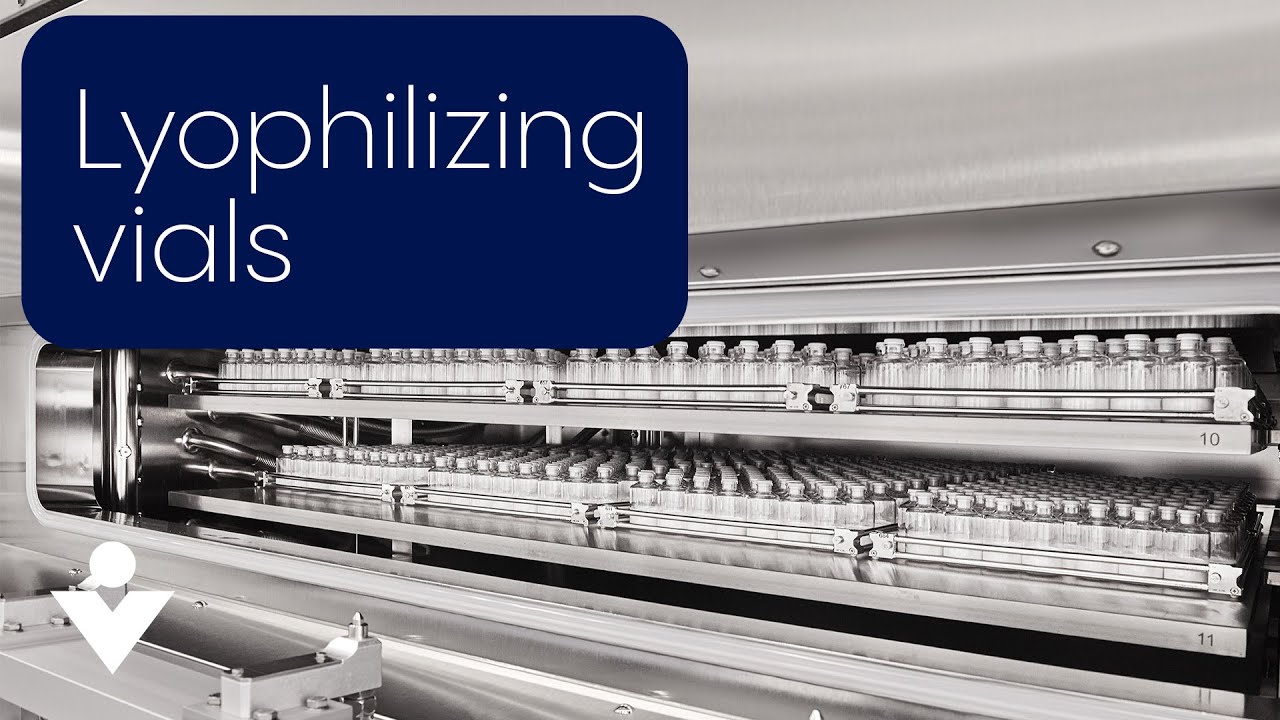Enhanced Automated Visual Inspection For Lyophilized Vials: Technological Improvements And Future Directions

Table of Contents
Advanced Imaging Technologies for Enhanced Detection
The core of enhanced automated visual inspection (AVI) lies in its ability to detect defects with unparalleled accuracy. Significant improvements in imaging technologies have made this possible.
High-Resolution Imaging
Improvements in camera technology are paramount. Increased pixel density in modern CMOS and CCD cameras, coupled with advanced spectral imaging capabilities, allows for the detection of minute defects previously invisible to the naked eye. For example, advancements from 2MP to 12MP cameras have significantly improved the detection of cracks and particulate matter. Improved contrast algorithms further enhance the visibility of subtle defects.
- Increased pixel density for finer detail capture.
- Advanced spectral imaging for enhanced contrast and defect identification.
- Improved contrast algorithms for better visualization of subtle defects.
- Examples: CMOS sensors offering resolutions exceeding 12MP, CCD cameras with superior low-light performance.
Machine Vision Algorithms
Sophisticated algorithms are the "brains" behind AVI systems. Advancements in artificial intelligence (AI) and machine learning (ML), specifically deep learning models, have revolutionized defect detection. These algorithms excel at pattern recognition and anomaly detection, identifying even complex or unusual defects with remarkable speed and accuracy.
- Deep learning models for superior defect classification.
- Advanced pattern recognition for identifying recurring defects.
- Robust anomaly detection to flag unusual or unexpected issues.
- Utilization of computer vision libraries like OpenCV for algorithm implementation.
- Example: Convolutional Neural Networks (CNNs) trained on vast datasets of images to identify subtle cracks or particulate contamination.
3D Imaging and Tomography
While 2D imaging is effective for surface defects, 3D imaging techniques provide a more comprehensive view. X-ray and computed tomography (CT) scanning offer the ability to visualize internal defects, such as incomplete lyophilization or internal cracks, invisible to 2D systems. 3D reconstruction algorithms create detailed three-dimensional models for thorough analysis.
- X-ray imaging for detection of internal density variations.
- CT scanning for high-resolution 3D visualization of vial contents and structure.
- Advanced 3D reconstruction algorithms for detailed defect analysis.
- Example: Identifying incomplete lyophilization or internal fracturing through 3D reconstruction from CT scan data.
Improved Automation and Throughput for Lyophilized Vial Inspection
Beyond enhanced imaging, advancements in automation are crucial for increasing throughput and efficiency.
High-Speed Automated Systems
Modern AVI systems utilize robotic systems and advanced conveyor belt integration to inspect vials at significantly higher speeds than manual inspection. Parallel processing of images further accelerates the inspection process, meeting the increasing demands of high-volume pharmaceutical production.
- Robotic systems for automated vial handling and positioning.
- High-speed conveyor belt integration for continuous flow inspection.
- Parallel processing of images for increased throughput.
- Example: Systems capable of inspecting over 1000 vials per minute.
Automated Handling and Feeding Mechanisms
Handling fragile lyophilized vials requires careful consideration. Advanced robotic systems with gentle handling mechanisms and vibration-dampening systems minimize the risk of damage during the inspection process. Automated loading and unloading further streamlines the workflow.
- Gentle handling robots with specialized grippers to avoid vial breakage.
- Vibration-dampening systems to minimize stress on the vials during transport.
- Automated loading and unloading systems for seamless integration into production lines.
- Example: Use of collaborative robots (cobots) for precise and safe vial manipulation.
Data Management and Analysis
Effective data management is crucial for process optimization and quality control. Modern AVI systems incorporate data logging, real-time monitoring, and statistical process control (SPC) to track defects, identify trends, and optimize the inspection process. Cloud-based data storage and analytics platforms provide enhanced data analysis capabilities.
- Data logging for comprehensive record-keeping and traceability.
- Real-time monitoring for immediate feedback and process adjustments.
- Statistical process control (SPC) for identifying trends and potential issues.
- Defect tracking and reporting for improved quality control.
- Example: Using cloud platforms to store and analyze vast amounts of inspection data for identifying patterns and predicting potential failures.
Future Directions in Automated Visual Inspection for Lyophilized Vials
The field of AVI for lyophilized vials is constantly evolving. Several exciting avenues promise even greater improvements in the future.
Integration with other technologies
The future will likely see seamless integration of AVI with other quality control methods such as weight checking, leak detection, and even near-infrared (NIR) spectroscopy for content uniformity analysis. This holistic approach to quality control will provide a more comprehensive assessment of vial integrity and product quality.
- Automated line integration for streamlined quality control workflows.
- Data sharing between different quality control systems for comprehensive analysis.
- Holistic quality control strategy for improved product reliability.
Advanced Analytics and Predictive Maintenance
Predictive analytics, leveraging machine learning, will play a growing role in predicting potential equipment failures and optimizing maintenance schedules. Real-time anomaly detection will enable proactive intervention, minimizing downtime and ensuring consistent system performance.
- Machine learning for predictive maintenance of AVI systems.
- Real-time anomaly detection for proactive issue resolution.
- Improved system reliability and reduced downtime through predictive maintenance.
Miniaturization and Cost Reduction
The development of smaller, more affordable AVI systems is crucial for making this technology accessible to smaller pharmaceutical companies and laboratories. Efforts to reduce component costs and streamline manufacturing processes will contribute to broader adoption of AVI technology.
- Development of compact and portable AVI systems.
- Reduced component costs through innovative design and manufacturing techniques.
- Increased accessibility of AVI technology for smaller companies and laboratories.
Conclusion: The Future is Automated: Enhancing Lyophilized Vial Inspection
Enhanced automated visual inspection for lyophilized vials represents a paradigm shift in pharmaceutical quality control. Through advancements in imaging technologies, automation, and data analytics, AVI systems offer significantly improved product quality, reduced costs, and increased efficiency compared to manual inspection. The future holds even greater promise, with ongoing innovations paving the way for more integrated, intelligent, and accessible AVI solutions. We encourage you to explore the latest advancements in enhanced automated visual inspection for lyophilized vials and discover how these technologies can transform your operations. Research leading vendors in automated visual inspection systems and explore the potential of integrating these cutting-edge solutions into your quality control strategy.

Featured Posts
-
 Top 5 Indy 500 Drivers Facing Elimination In 2025
May 11, 2025
Top 5 Indy 500 Drivers Facing Elimination In 2025
May 11, 2025 -
 Todays Comic Book News Superman Daredevil Vs Bullseye And 1923
May 11, 2025
Todays Comic Book News Superman Daredevil Vs Bullseye And 1923
May 11, 2025 -
 Nine Potential Successors To Pope Francis A Look At The Leading Cardinals
May 11, 2025
Nine Potential Successors To Pope Francis A Look At The Leading Cardinals
May 11, 2025 -
 Conclave 2023 Quienes Podrian Suceder Al Papa Francisco
May 11, 2025
Conclave 2023 Quienes Podrian Suceder Al Papa Francisco
May 11, 2025 -
 Dechiffrage Economique La Resistance De L Euro Malgre Les Pressions
May 11, 2025
Dechiffrage Economique La Resistance De L Euro Malgre Les Pressions
May 11, 2025
